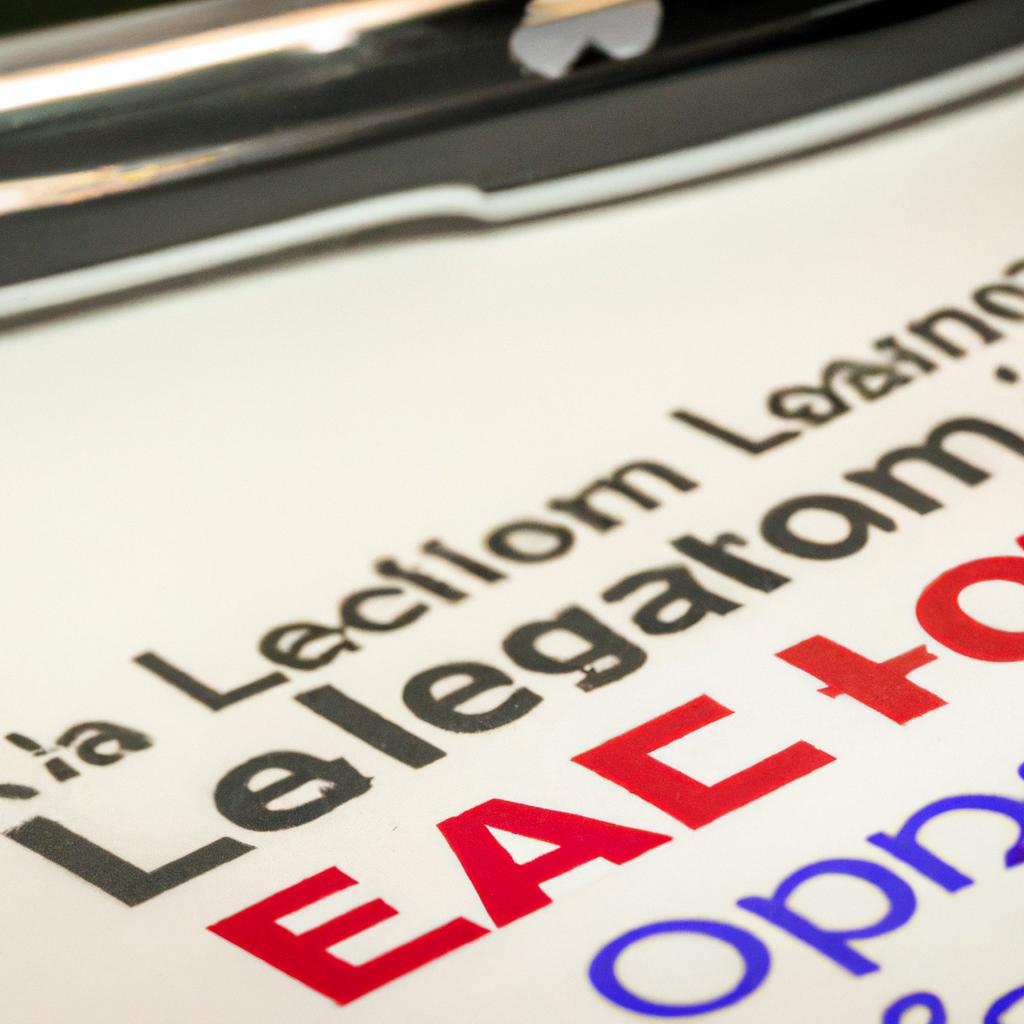As the executor of an estate, navigating the process of transferring a vehicle title is a crucial step in settling a deceased individual’s affairs. With each state having specific requirements and regulations regarding the signing of a car title by an executor, it is imperative to understand the proper protocol to avoid any potential legal complications. In this article, we will delve into the intricacies of signing a car title as an executor of an estate, ensuring a seamless and legally sound transfer of ownership. Trust the experienced attorneys at Morgan Legal Group in New York City to guide you through the intricate process of estate planning, probate, elder law, wills, and trusts.
Signing as Executor of Estate on Car Title
As the executor of an estate, signing a car title can be a complex process that requires attention to detail and adherence to legal requirements. One of the key steps in this process is ensuring that you have the authority to sign the car title on behalf of the deceased individual’s estate. Here are some important considerations to keep in mind when signing a car title as the executor of an estate:
- Verify your authority: Before signing the car title, it is essential to confirm that you have been legally appointed as the executor of the estate. This may involve obtaining a court order or a letter of testamentary that grants you the authority to act on behalf of the deceased individual.
- Use the correct title: When signing the car title, make sure to use the deceased individual’s name followed by “by [Your Name], Executor.” Using the correct title is crucial in ensuring that the transfer of ownership is legally valid and in compliance with state laws.

Navigating the Legal Process with Precision and Care
When signing a car title as the executor of an estate, it is crucial to follow the legal process with precision and care. As the executor, you hold a position of trust and responsibility in ensuring that the estate’s assets are properly distributed according to the decedent’s wishes and the law.
One important step in signing a car title as an executor is to obtain the necessary documentation, such as the death certificate and letters testamentary. These documents can help prove your authority to act on behalf of the estate. Additionally, it is essential to sign the car title in the correct capacity, using language that clearly indicates your role as the executor, such as “John Smith, Executor of the Estate of Jane Doe.” By following these steps with diligence and attention to detail, you can navigate the legal process successfully and fulfill your duties as the executor of the estate.

Ensuring Proper Authorization and Compliance
Signing a car title as an executor of an estate is a critical step in with legal requirements. As an executor, it is essential to follow the correct procedures to transfer ownership of the vehicle from the deceased to the rightful beneficiaries. Here are some key steps to consider when signing a car title as an executor:
First, verify your authority as the executor of the estate by presenting the necessary legal documents, such as the deceased’s will and your appointment as executor. This will help establish your right to act on behalf of the estate in transferring ownership of the vehicle. Next, carefully review the car title to ensure that it is free of any liens or encumbrances that could complicate the transfer process. If the title is clear, you can proceed with signing it in accordance with state laws and regulations. Remember to sign the title exactly as your name appears in the legal documents, and include your title as executor to signify your authority. Finally, ensure that all required signatures are obtained from other parties involved in the transfer, such as co-executors or beneficiaries, to complete the process smoothly and avoid any potential disputes or challenges. By following these steps diligently, you can help ensure that the transfer of ownership is properly authorized and compliant with the law.
Expert Tips for Executing Title Transfer Successfully
When it comes to transferring a title as the executor of an estate, there are several key steps to follow in order to ensure a successful process. To begin, it is crucial to thoroughly review the deceased individual’s will and any relevant legal documents to determine the proper procedure for transferring the title. This may involve obtaining a court order or approval from the probate court.
Next, it is important to gather all necessary documents, including the death certificate, the original title of the vehicle, and any required forms or affidavits. Be sure to carefully follow all instructions for completing the title transfer, including signing as the executor of the estate. It is recommended to seek guidance from a legal professional specializing in estate planning to ensure that the transfer is executed correctly and in accordance with the law.
Q&A
Q: What is an executor of an estate, and why do they need to sign a car title?
A: An executor of an estate is a person appointed to manage the deceased’s assets and debts according to their will. They need to sign a car title to transfer ownership of the vehicle to the rightful inheritor.
Q: How can an executor sign a car title on behalf of the deceased?
A: The executor must provide proof of their legal authority, such as a court order or letters testamentary. They should sign the title as “[Your Name], Executor of the Estate of [Deceased’s Name].”
Q: Are there any specific steps that must be followed when signing a car title as an executor?
A: Yes, the executor must make sure all other necessary information is filled out on the title, including the odometer reading and sale price. They should also have a notary public witness their signature.
Q: Can an executor transfer ownership of the vehicle to themselves?
A: Yes, if the deceased’s will dictates that the vehicle belongs to the executor. Otherwise, the executor must transfer ownership to the rightful inheritor as outlined in the will.
Q: What happens if the car title is not signed properly?
A: If the car title is not signed correctly, the transfer of ownership may be invalidated, causing complications with registration and insurance. It is important to follow the proper procedures to avoid any legal issues.
Closing Remarks
In conclusion, signing a car title as the executor of an estate is an important legal process that requires attention to detail and adherence to specific guidelines. By following the steps outlined in this article, you can ensure a smooth and efficient transfer of ownership. Remember to consult with legal professionals or estate administrators if you have any questions or concerns. Thank you for reading, and best of luck navigating the complexities of estate management.
 How to Sign a Car Title as Executor of Estate: A Comprehensive Guide
How to Sign a Car Title as Executor of Estate: A Comprehensive Guide
When a loved one passes away, their assets, including cars, are often left behind to be managed by the executor of their estate. As the executor, it is your responsibility to handle the transfer of ownership of these assets, including any vehicles that were owned by the deceased. One crucial task in this process is signing the car title. In this guide, we will provide a step-by-step overview of how to sign a car title as the executor of an estate.
Before we dive into the process, it is essential to understand the role of an executor and their duties. An executor is someone appointed by the deceased’s will to manage their estate, which includes settling debts and distributing assets to beneficiaries. As an executor, it is crucial to adhere to state laws and follow the deceased’s wishes as outlined in their will. Keep in mind that the process of signing a car title as an executor may vary slightly from state to state, so it is crucial to consult with an attorney or a local DMV office for specific requirements.
Step 1: Gather Required Documents
Before you can begin the process of signing a car title as an executor, you must have all the necessary documents in hand. These include:
– Death certificate of the deceased
– Original car title
– Copy of the deceased’s will (if available)
– A notarized executor of estate document (provided by the court)
– A valid government-issued ID (driver’s license, passport, etc.)
Step 2: Determine if the Car Needs to Go Through Probate
Probate is the legal process of distributing assets and settling debts of a deceased person. If the deceased owned the car solely in their name, the car may need to go through probate before the title can be transferred to the new owner. However, if the deceased owned the car jointly with another person, it can generally be transferred without probate. It is essential to consult with an attorney to determine if probate is necessary for the car in question.
Step 3: Fill Out the Necessary Forms
Once it is determined that probate is necessary for the car, the executor must fill out the necessary forms to transfer the title. These forms may vary depending on the state, but generally, you will need to fill out an executor of estate document, an application for transfer of ownership, and a transfer of title form.
Step 4: Obtain a Notarized Executor Appointment Document
In most states, the executor must have a notarized document indicating their appointment as executor of the deceased’s estate. The probate court typically provides this document, and it should be kept with the other required documents.
Step 5: Sign the Title
After gathering and filling out all the necessary paperwork, it is time to sign the car title. As the executor, your signature must be notarized, and you must sign the title as “executor of the estate of [deceased person’s name].” This indicates that you are acting on behalf of the deceased and have the authority to sign the title.
Step 6: Complete the Odometer Disclosure Statement
In most cases, the executor will also need to complete an odometer disclosure statement. This statement verifies the car’s mileage at the time of transfer and protects the buyer from any discrepancies in the odometer reading.
Step 7: Transfer the Title
Once the title is signed and all paperwork is completed, it is time to transfer the car title to the new owner, whether it be a beneficiary or a buyer. To transfer the title, the executor will need to visit the local DMV office and present all the necessary paperwork. The buyer will also need to provide appropriate identification and complete their portion of the transfer of title form.
Tips for Signing a Car Title as an Executor of Estate
– Consult with an attorney: The process of transferring a car title as an executor may vary depending on state laws and the specifics of the estate. It is recommended to consult with an attorney to ensure all legal requirements are met.
– Keep accurate records: As an executor, it is crucial to keep accurate records of all transactions related to the estate, including the sale or transfer of a car title. This will help prevent any disputes or issues in the future.
– Be mindful of taxes: Transferring ownership of a car may have tax implications for the estate. It is recommended to consult with a tax professional to ensure all taxes are properly filed and paid.
– Communicate with beneficiaries: If the car is being transferred to a beneficiary, it is essential to communicate with them throughout the process to avoid any confusion or disputes.
– Consider the car’s condition: It is common for cars owned by the deceased to have a sentimental value to the family. If the car is in poor condition, it may be best to sell it rather than transferring it to a beneficiary who may not be able to afford the upkeep.
In conclusion, signing a car title as the executor of an estate can be a complex process, but by following the necessary steps and consulting with professionals, it can be done efficiently and legally. It is also essential to keep open communication with beneficiaries and handle the transfer with sensitivity. As an executor, it is your responsibility to ensure all assets are properly distributed, including any vehicles owned by the deceased.


